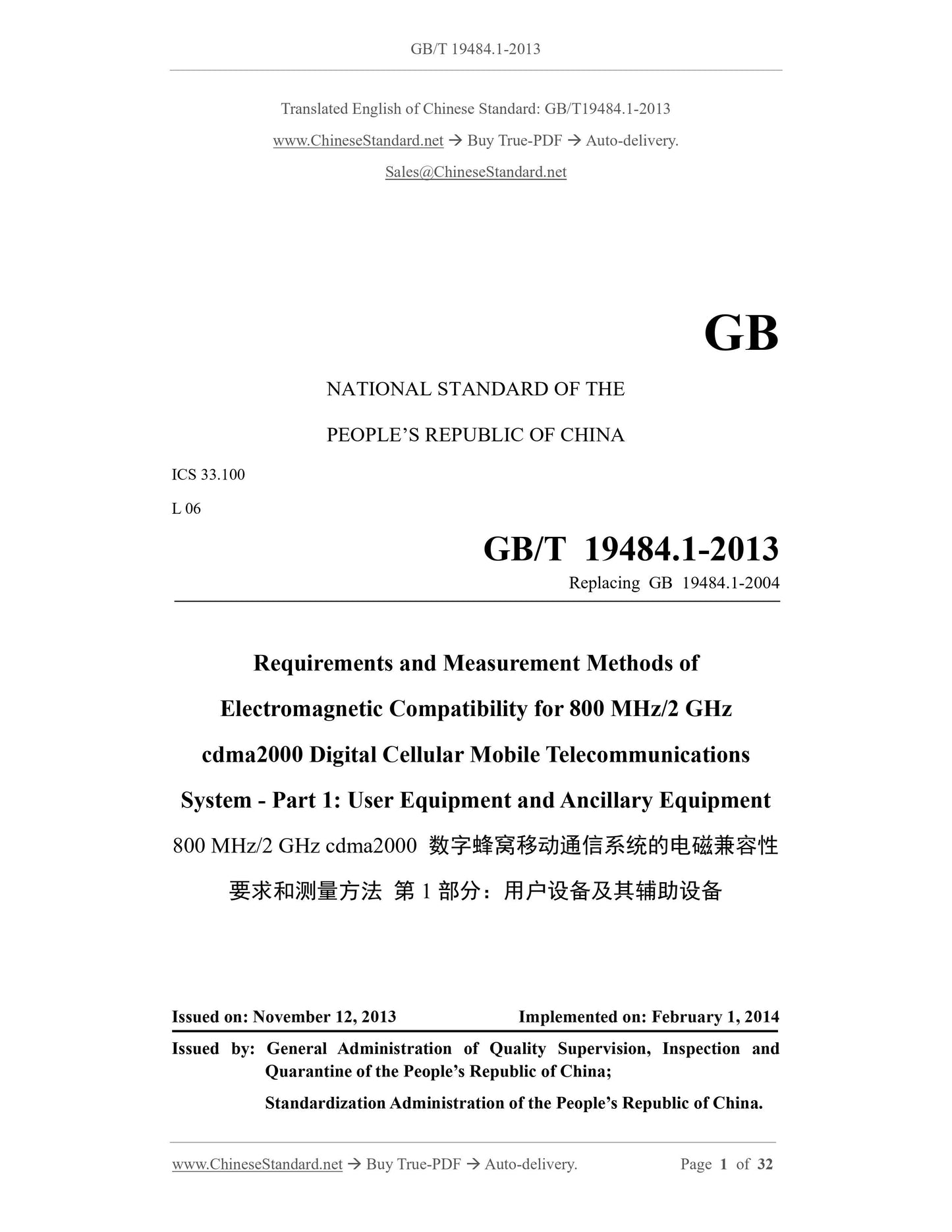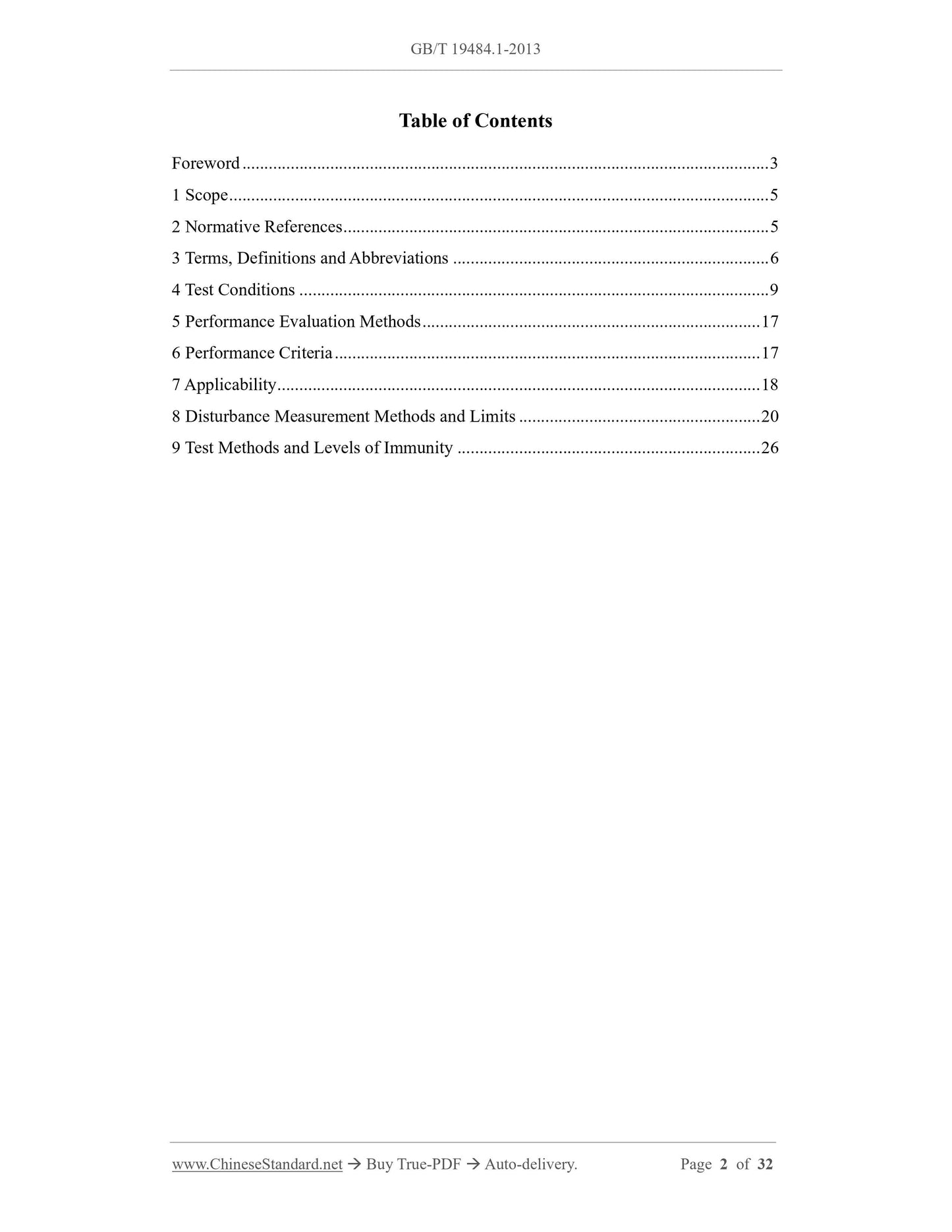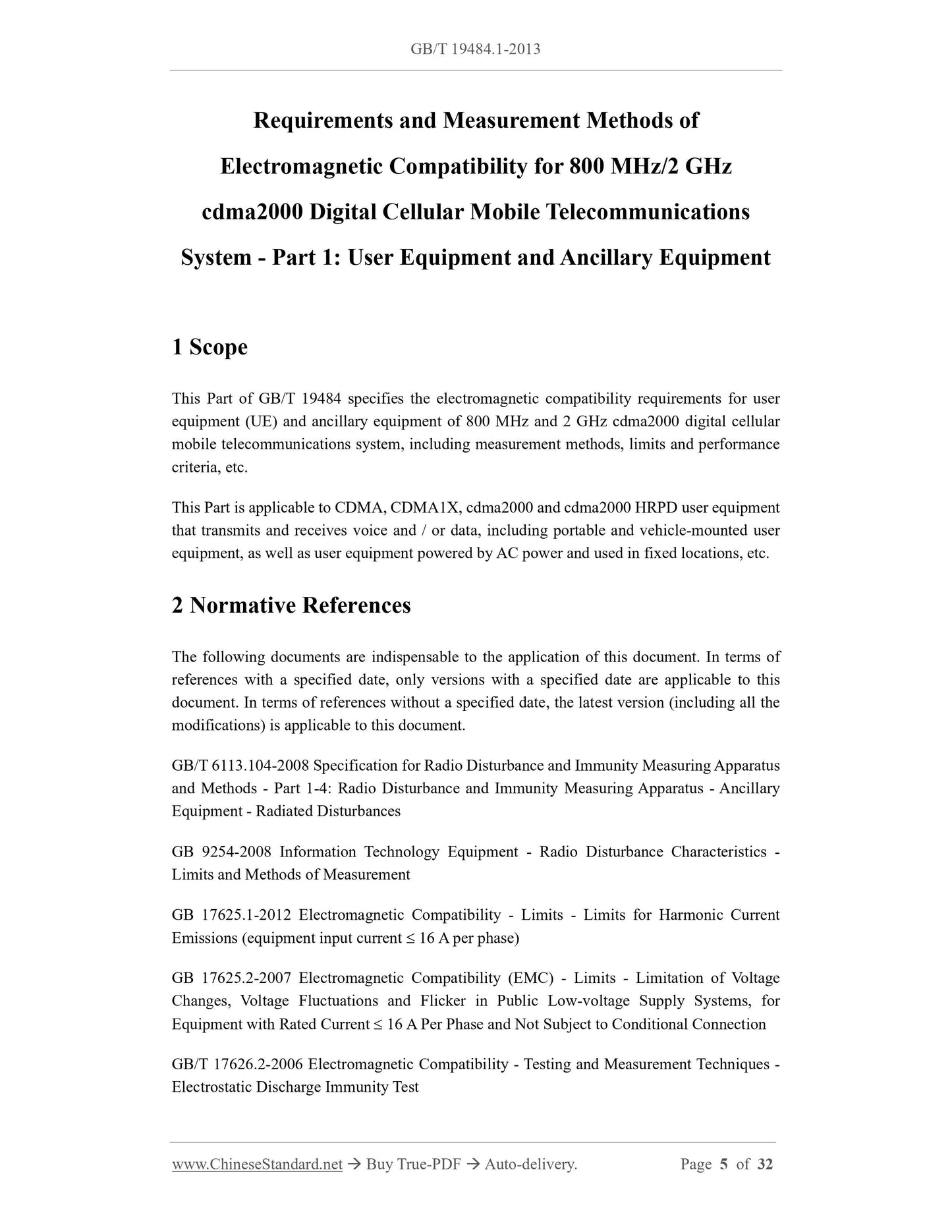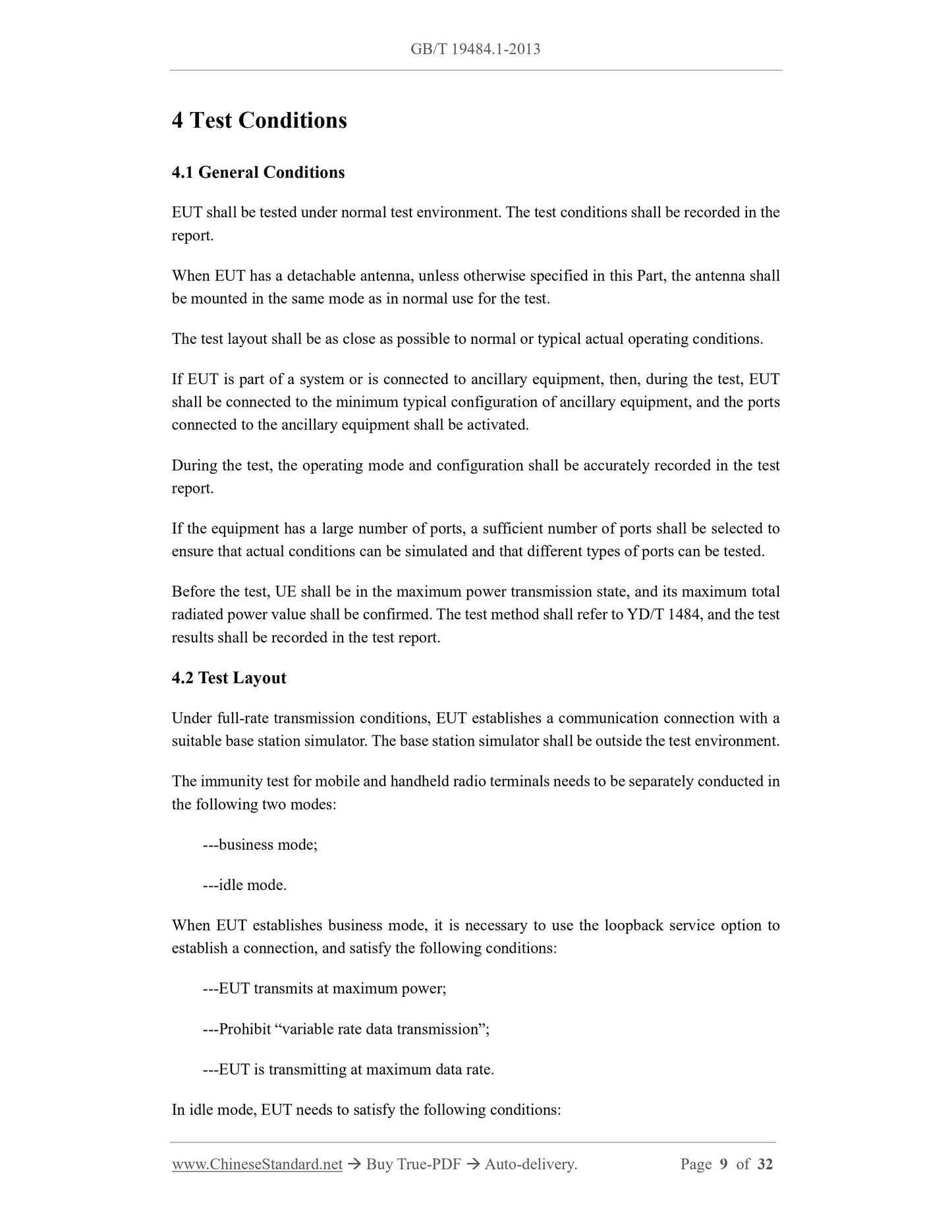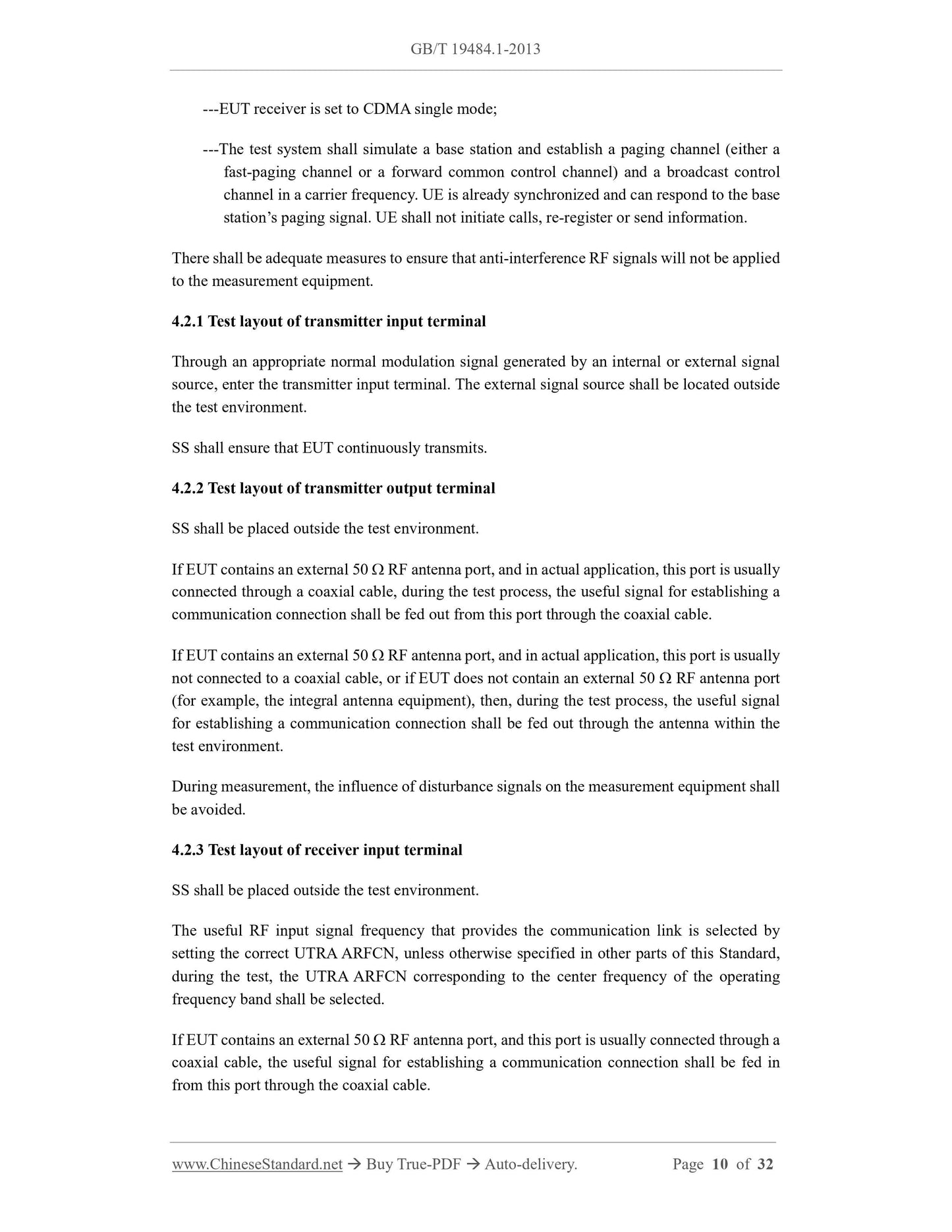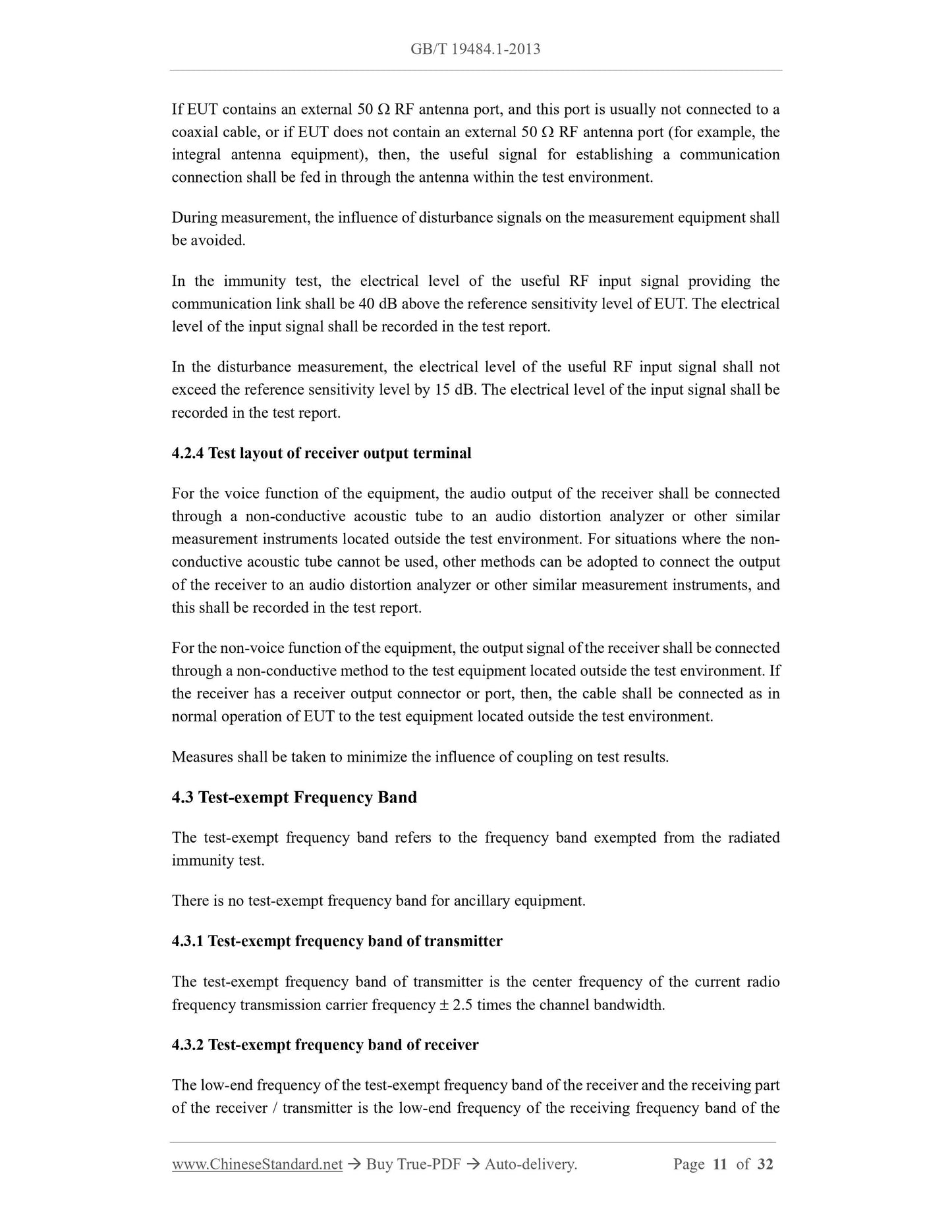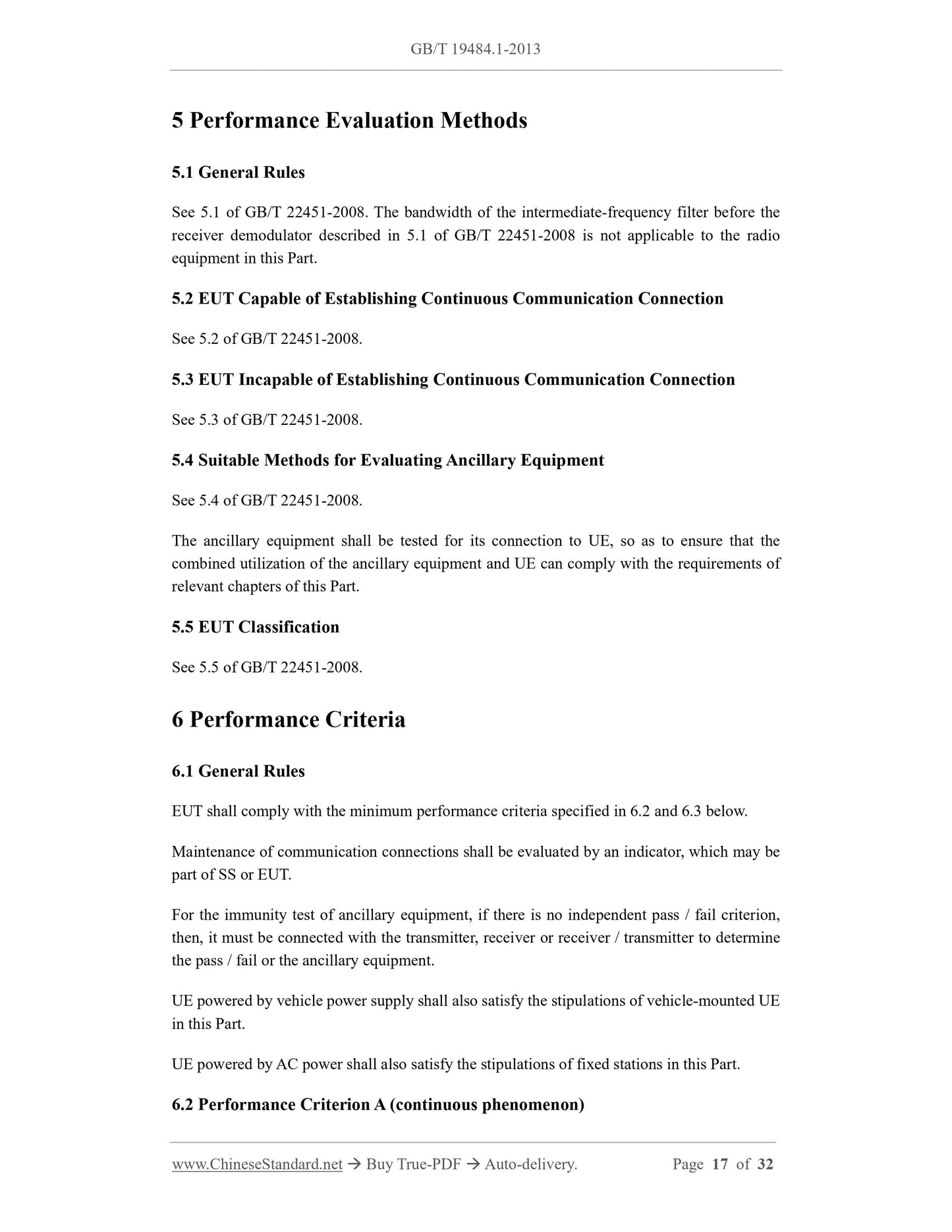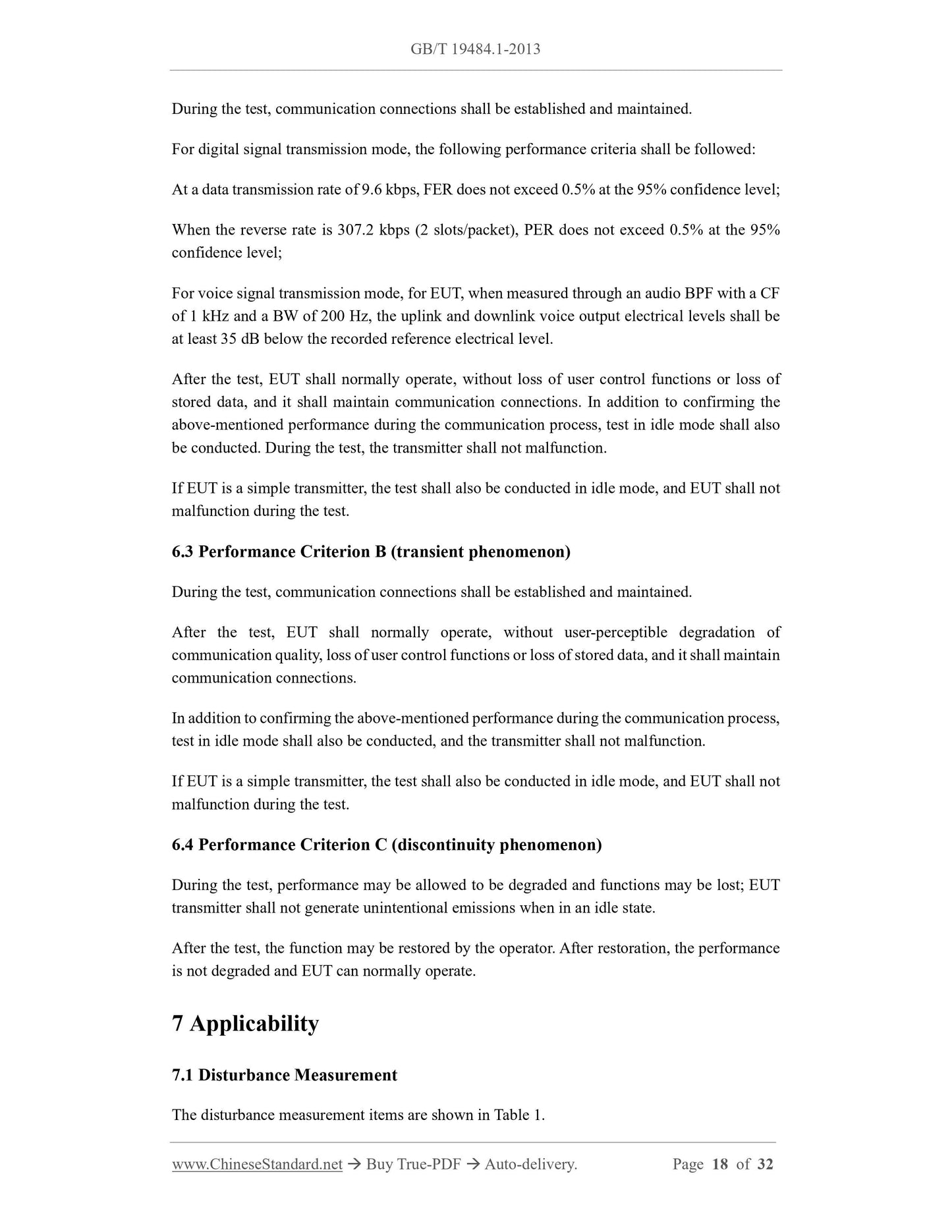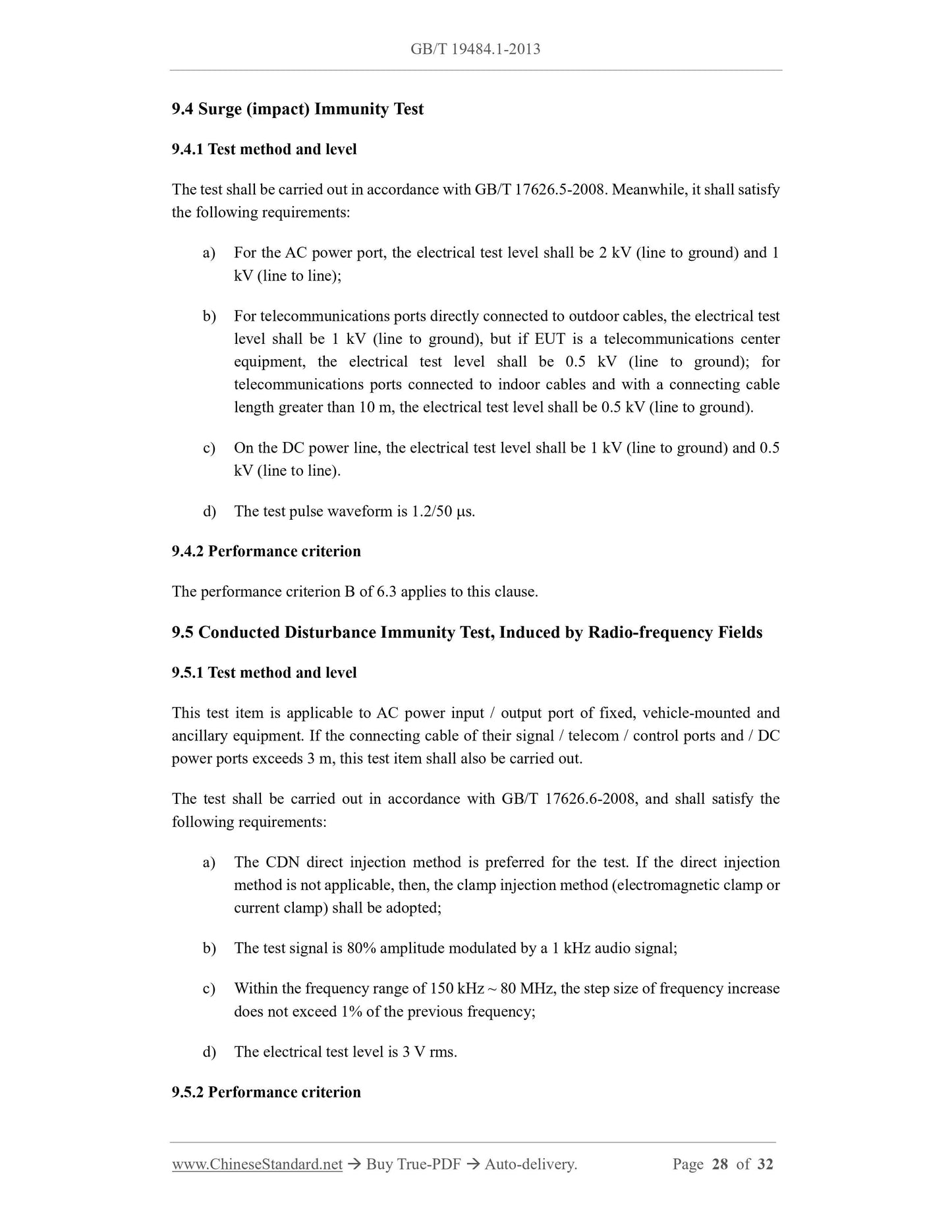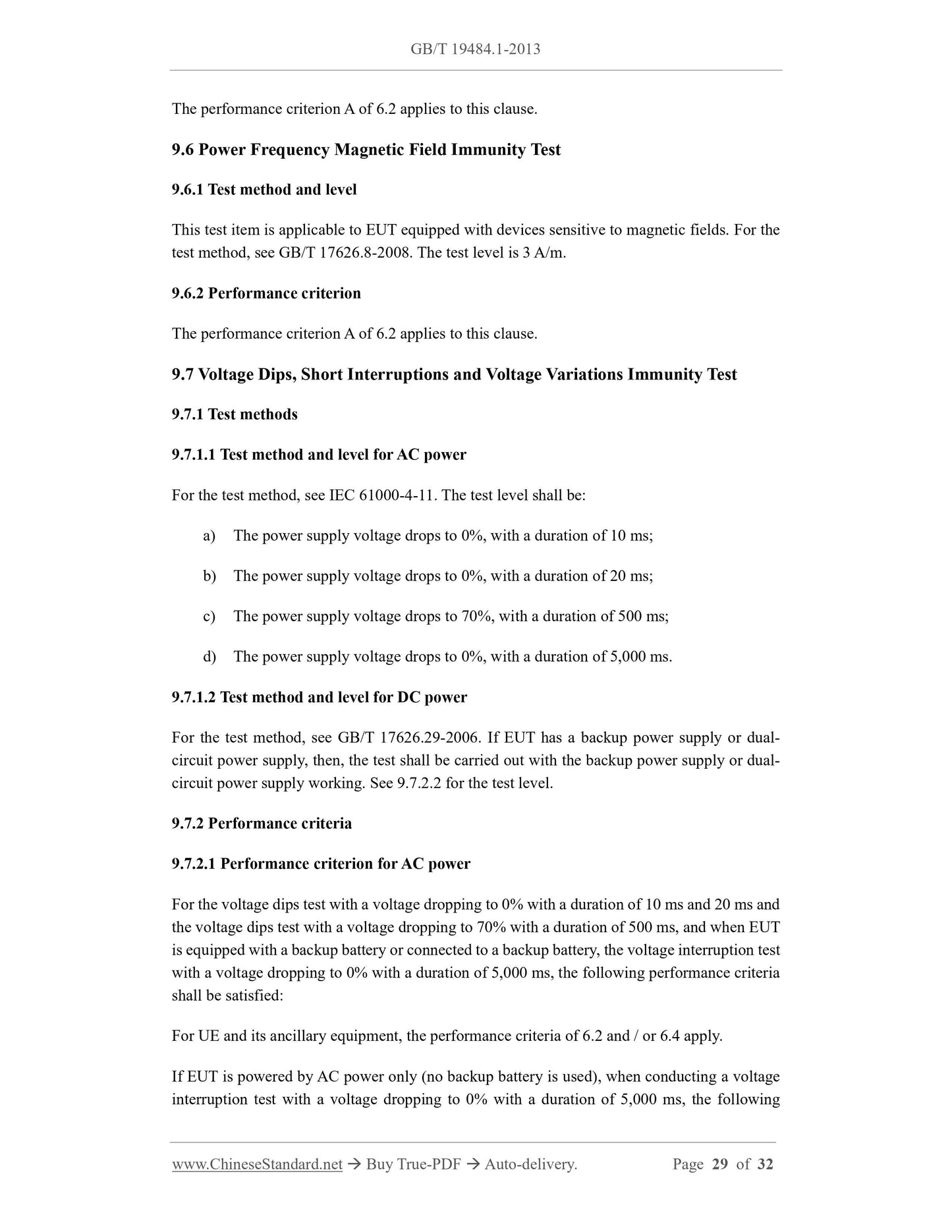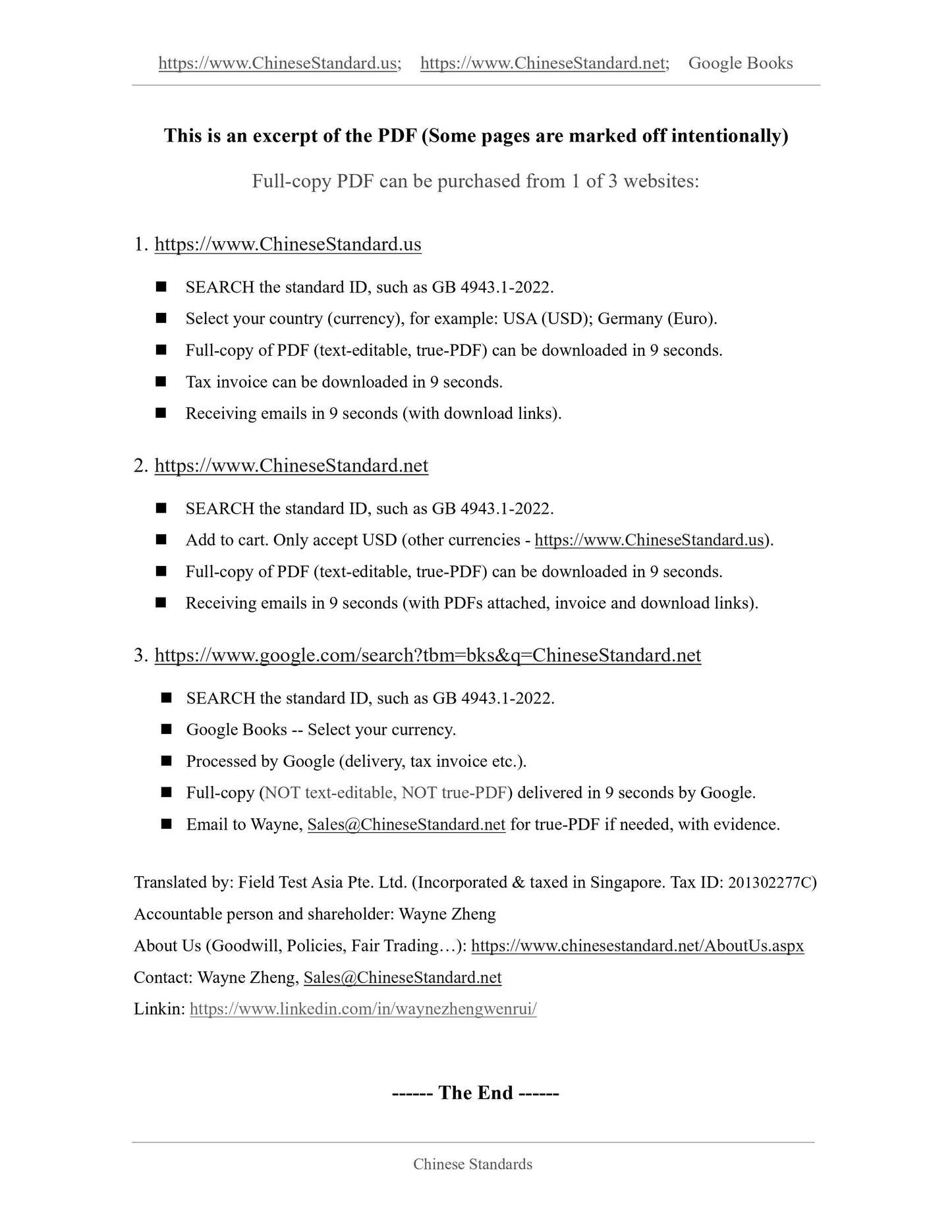1
/
of
11
www.ChineseStandard.us -- Field Test Asia Pte. Ltd.
GB/T 19484.1-2013 English PDF (GB/T19484.1-2013)
GB/T 19484.1-2013 English PDF (GB/T19484.1-2013)
Regular price
$305.00
Regular price
Sale price
$305.00
Unit price
/
per
Shipping calculated at checkout.
Couldn't load pickup availability
GB/T 19484.1-2013: Requirements and measurement methods of electromagnetic compatibility for 800MHz/2GHz cdma2000 digital cellular mobile telecommunications system - Part 1: User equipment and ancillary equipment
Delivery: 9 seconds. Download (and Email) true-PDF + Invoice.Get Quotation: Click GB/T 19484.1-2013 (Self-service in 1-minute)
Newer / historical versions: GB/T 19484.1-2013
Preview True-PDF
Scope
This Part of GB/T 19484 specifies the electromagnetic compatibility requirements for userequipment (UE) and ancillary equipment of 800 MHz and 2 GHz cdma2000 digital cellular
mobile telecommunications system, including measurement methods, limits and performance
criteria, etc.
This Part is applicable to CDMA, CDMA1X, cdma2000 and cdma2000 HRPD user equipment
that transmits and receives voice and / or data, including portable and vehicle-mounted user
equipment, as well as user equipment powered by AC power and used in fixed locations, etc.
Basic Data
| Standard ID | GB/T 19484.1-2013 (GB/T19484.1-2013) |
| Description (Translated English) | Requirements and measurement methods of electromagnetic compatibility for 800MHz/2GHz cdma2000 digital cellular mobile telecommunications system - Part 1: User equipment and ancillary equipment |
| Sector / Industry | National Standard (Recommended) |
| Classification of Chinese Standard | L06 |
| Classification of International Standard | 33.100 |
| Word Count Estimation | 23,231 |
| Older Standard (superseded by this standard) | GB 19484.1-2004 |
| Quoted Standard | GB/T 6113.104-2008; GB 9254-2008; GB 17625.1-2012; GB 17625.2-2007; GB/T 17626.2-2006; GB/T 17626.3-2006; GB/T 17626.4-2008; GB/T 17626.5-2008; GB/T 17626.6-2008; GB/T 17626.8-2006; GB/T 17626.29-2006; GB/T 21437.2-2008; GB/T 22451-2008; YD/T 1483-2006; Y |
| Regulation (derived from) | National Standards Bulletin No. 22 of 2013 |
| Issuing agency(ies) | General Administration of Quality Supervision, Inspection and Quarantine of the People's Republic of China, Standardization Administration of the People's Republic of China |
| Summary | This standard specifies: 80, MHz and, GH, cdma2000 digital cellular mobile communication system the user equipment (UE) and auxiliary equipment Electromagnetic compatibility requirements, including measurement methods, limits performance criteria. This st |
Share
